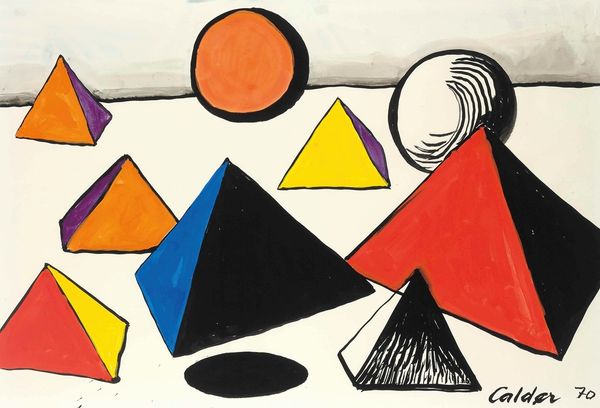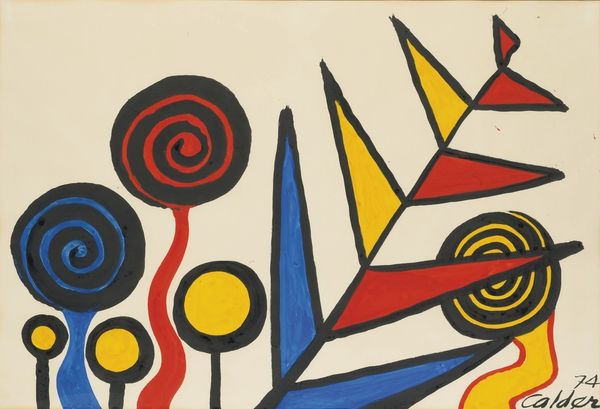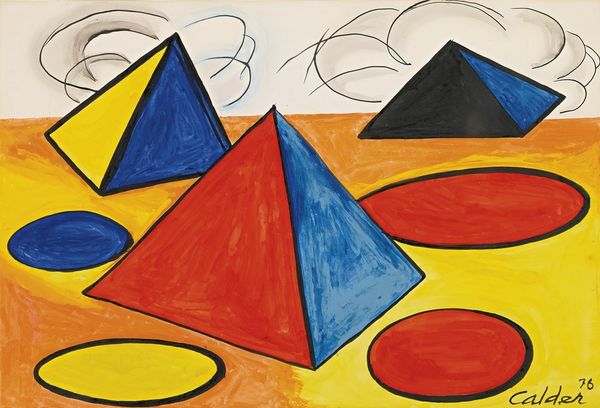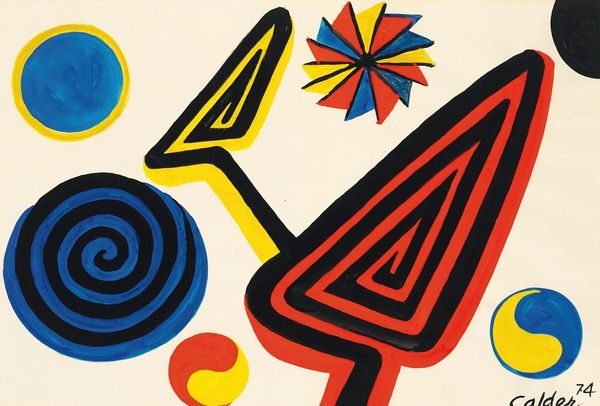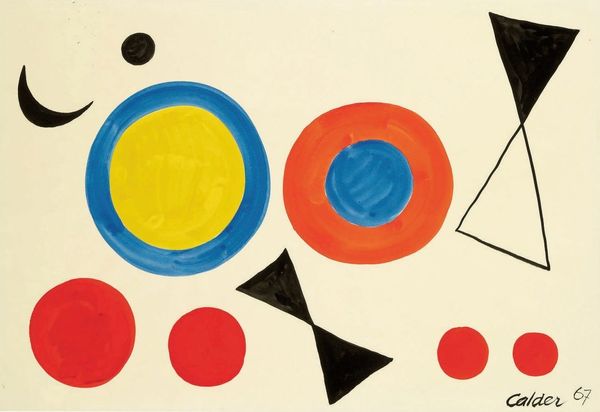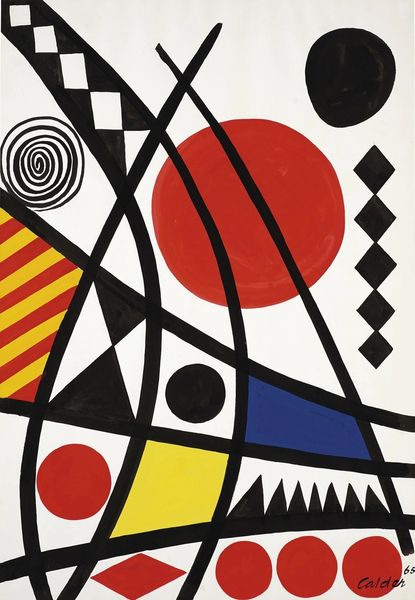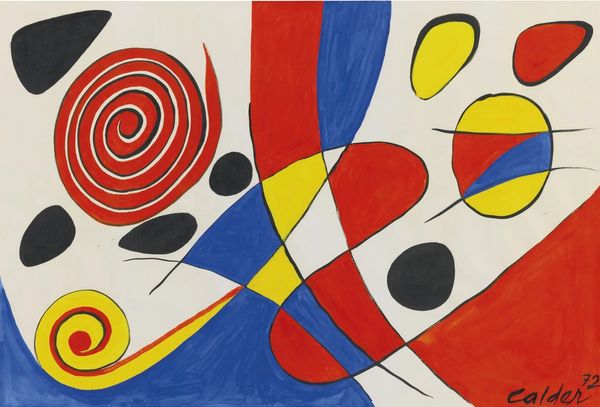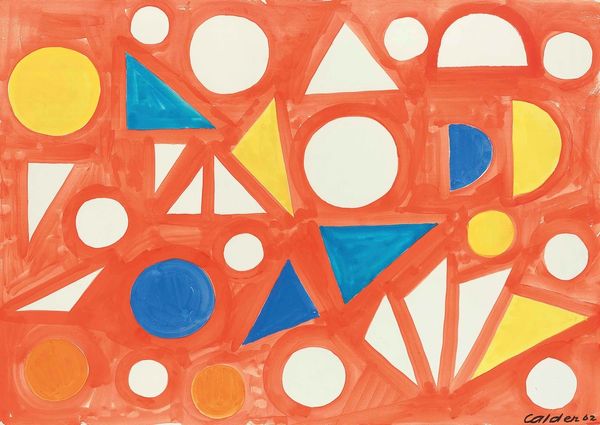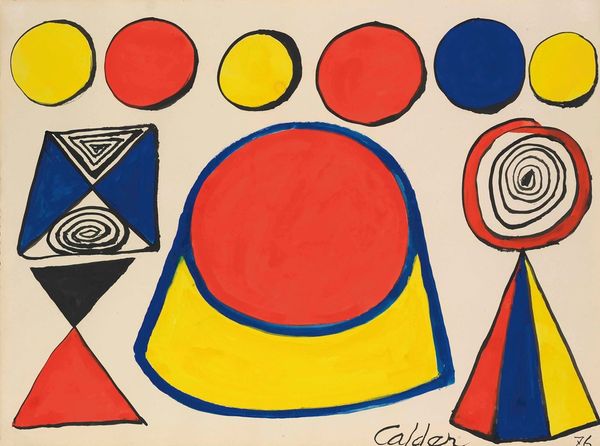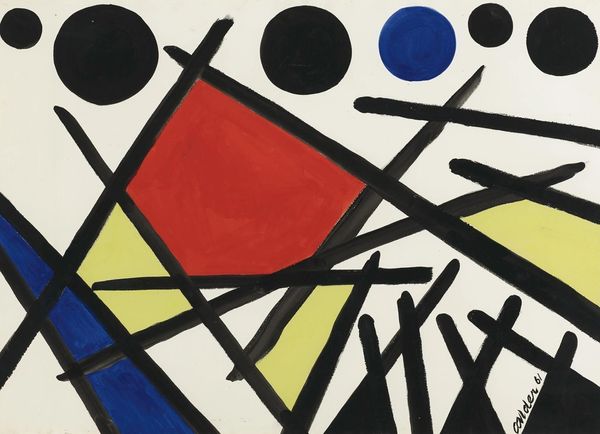
Copyright: Modern Artists: Artvee
Editor: Here we have Alexander Calder's "Pyramids and Discs" from 1974, made with acrylic paint. It strikes me as playful, almost like a child's blocks scattered on a page. What do you see in this piece? Curator: Oh, Calder. He’s always playing, isn’t he? What I see is Calder, ever the whimsical engineer, continuing his dance with geometry. But, look closer, and there's more than meets the eye. Those shapes aren't just plopped down. It’s like Calder’s trying to create a conversation between forms, a silent ballet, you might say. Does the bold simplicity remind you of anyone? Perhaps Mondrian? But imagine Mondrian decided to have some fun, loosening up that rigid grid a bit. Editor: Absolutely, I can see that! So it's less about perfect shapes and more about the relationship *between* them? Curator: Exactly! The overlapping planes create a sense of depth, of implied movement. And consider those stark colours: primaries that shout rather than whisper, making a real statement for art in that era. Now, what is it saying? What could the simple geometry express about its time? Editor: Perhaps it reflects a fascination with modern forms and the excitement around geometric abstraction during that period? It definitely feels modern, even now! Curator: Yes, I think so. It's a cheerful echo of modernism, seasoned with a bit of Calder's particular brand of joy. For me, it sings of optimism and a continued wonder in basic building blocks. Did we unlock something new in it together, I wonder? Editor: Definitely! It's amazing how seemingly simple shapes can have so much going on beneath the surface.
Comments
No comments
Be the first to comment and join the conversation on the ultimate creative platform.
